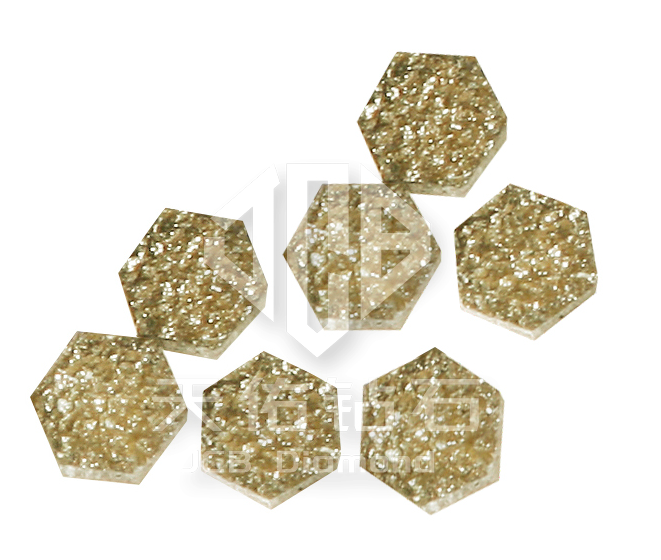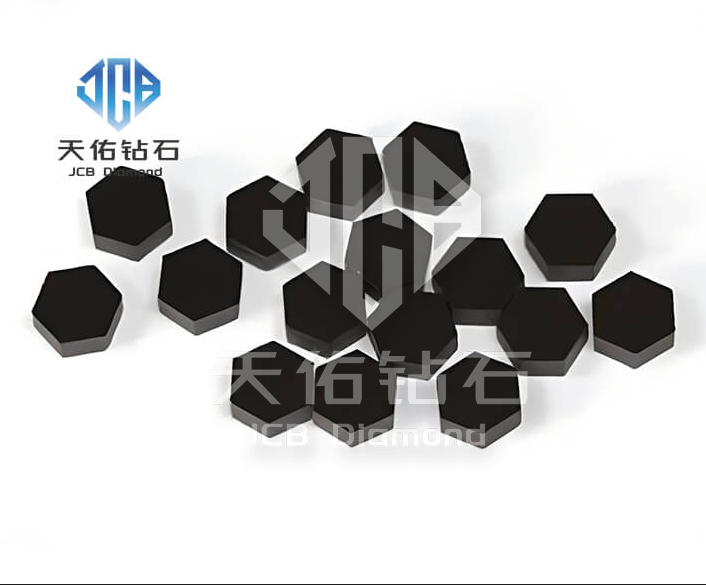Abstract: This report focuses on CVD polycrystalline diamond wire drawing cores, and elaborates on its preparation process, performance characteristics, application fields and market prospects. Through in-depth analysis of relevant technologies and discussion of actual application cases, it reveals its key role and advantages in the wire drawing industry, and provides a reference for the development of the industry.
I. Introduction
With the rapid development of modern industry, the demand for various types of wires such as metal wires and optical fibers is increasing. As a key link in wire production, the performance of its core component, the wire drawing core, is crucial. CVD polycrystalline diamond wire drawing cores have gradually become a research hotspot in the wire drawing field due to their excellent hardness, wear resistance, chemical stability and other characteristics.
II. Overview of CVD polycrystalline diamond
1. Definition and structure
CVD (chemical vapor deposition) polycrystalline diamond is a polycrystalline diamond material grown on a specific substrate through chemical vapor deposition technology. It is composed of numerous tiny diamond grains arranged in disorder and has a continuous crystal structure. Compared with natural diamond, it has unique advantages in macroscopic performance.
2. Preparation principle
Using carbon-containing gas (such as methane, etc.) to decompose and deposit under high temperature, low pressure and catalyst, carbon atoms are deposited and crystallized layer by layer on the substrate surface, and gradually grow into a polycrystalline diamond layer. The key lies in the precise control of reaction parameters, such as temperature, gas flow, pressure, etc., to ensure the high-quality growth of diamond.
III. Key performance requirements of wire drawing die core
1. Hardness and wear resistance
During the wire drawing process, the die core needs to withstand high-speed friction of the wire. High hardness and excellent wear resistance can ensure that the die core can be used for a long time without obvious wear, maintain the wire drawing size accuracy, reduce the frequency of die replacement, and improve production efficiency.
2. Chemical stability
In the environment of various chemical media (such as wire drawing lubricants, etc.) involved in the wire drawing process, the die core should have good chemical stability to prevent corrosion and material degradation caused by chemical reactions, and ensure that the wire quality is not contaminated.
3. Thermal conductivity
During wire drawing, heat is generated by friction. Good thermal conductivity helps to dissipate heat in time, avoid local overheating causing material softening, wire adhesion and other problems, and maintain the normal working state of the core.

IV. Advantages of CVD polycrystalline diamond wire drawing core
1. Excellent comprehensive performance
Compared with traditional wire drawing core materials such as cemented carbide and natural diamond, CVD polycrystalline diamond has high hardness, high wear resistance, strong chemical stability and good thermal conductivity, and can adapt to more complex and demanding wire drawing conditions.
2. High degree of customization
By adjusting the CVD preparation process parameters, the microstructures such as diamond grain size and growth orientation can be accurately controlled, thereby achieving different performance optimization of the core to meet diverse wire drawing needs, such as different wire materials and wire drawing accuracy requirements.
3. Cost-effectiveness
Although the initial investment of CVD preparation is large, from the long-term use effect, its ultra-long service life, low maintenance cost and guarantee of high-quality wire production have significantly reduced the comprehensive cost of unit wire production.
V. Preparation process optimization research
1. Substrate selection and pretreatment
A suitable substrate is the basis for the growth of high-quality CVD polycrystalline diamond. Different substrate materials (such as silicon, silicon carbide, etc.) have a significant impact on diamond adhesion, growth rate and quality. Substrate pretreatment processes, including cleaning and etching, can effectively improve diamond nucleation and growth conditions.
2. Fine control of reaction parameters
In-depth study of the influence of parameters such as temperature, gas component ratio, deposition time, etc. on diamond growth rate, crystal quality, and internal stress, establish a precise control model, and achieve stable and efficient operation of the preparation process.
3. Post-processing technology
Post-process the grown CVD polycrystalline diamond core, such as polishing, etching microstructure, etc., to further improve the surface finish, optimize the die outlet shape, reduce wire drawing friction, and improve the surface quality of the wire.
VI. Application Case Analysis
1. Metal Wire Drawing
In the copper, aluminum and other metal wire drawing production lines, the use of CVD polycrystalline diamond drawing die cores significantly improves the drawing speed and die life, while reducing the wire size deviation caused by die wear, improving the product qualification rate, and bringing significant economic benefits to the wire and cable industry.
2. Optical Fiber Drawing
Optical fiber manufacturing has extremely high requirements for drawing die cores. CVD polycrystalline diamond die cores, with their ultra-smooth surface, extremely low friction coefficient and chemical inertness, ensure high-precision forming of optical fibers during the drawing process, reduce optical signal transmission loss, and effectively promote the development of the optical communication industry.

VII. Market Prospects and Challenges
1. Market Prospects
With the rapid development of electronics, communications, automobiles and other industries, the demand for high-quality wires continues to rise. CVD polycrystalline diamond drawing die cores are expected to grow steadily in market share due to their performance advantages. It is expected that in the next few years, it will dominate the global high-end drawing die core market.
2. Challenges
On the one hand, CVD technology still faces problems such as high equipment cost, complex preparation process, and the yield rate needs to be improved; on the other hand, the market competition is fierce, and it is necessary to cope with the challenges of improving traditional materials and emerging alternative materials. Continuous research and development innovation and cost optimization are the key breakthrough paths.
VIII. Conclusion
CVD polycrystalline diamond wire drawing die core has shown great potential in the wire drawing industry with its excellent performance. By continuously optimizing the preparation process, expanding the application field, and responding to market challenges, it is expected to become the core supporting technology for future wire production and promote related industries to a higher level.